
Thirsting to inhabit our own skin
Maria Joannou. Thirsty. The Breeder gallery, Athens. Notes.
Literally living within our skin on a daily basis, we take it for granted and rarely appreciate its advantages. For example, how often do we look at or notice our own skin for no particular reason other than external circumstances – such as routine hygiene, checking for the first signs of ageing, perhaps seeing what is causing that itch, or simply due to our innate narcissism? And not just in certain spots or areas, but as a whole... directly, with curiosity and a sense of wonder that we have it – just as it is.
To be honest, I don't think about it on a daily basis either. In a way, the exhibition titled Thirsty by Greek artist Maria Joannou, on show at The Breeder gallery in Athens until 31 August, brought me together with a part of myself that tends to live a quite solitary life most of the time. It was +37 °C in Athens that day. I was looking at Maria's paintings and trying to remember the last time I paid attention to the sensations evoked in me by the simple lift of a hand or the slip of a shirt over my head. The focus of the exhibition is the body in photographic enlargement, captured in seemingly mundane moments. Its nudity, or skin. Beautiful, real and unembellished, with its own life experiences – branched veins, moles and rough patches. Self-respecting, accepting and loving. It is no coincidence that its beautifully pink textural sensibility is so metaphysically "real" on canvas that it seems almost physically tangible. It is not explicitly sensual nor defiantly sexual, but very human; although, admittedly, these two traits are intrinsically present.
Thirsty: Installation view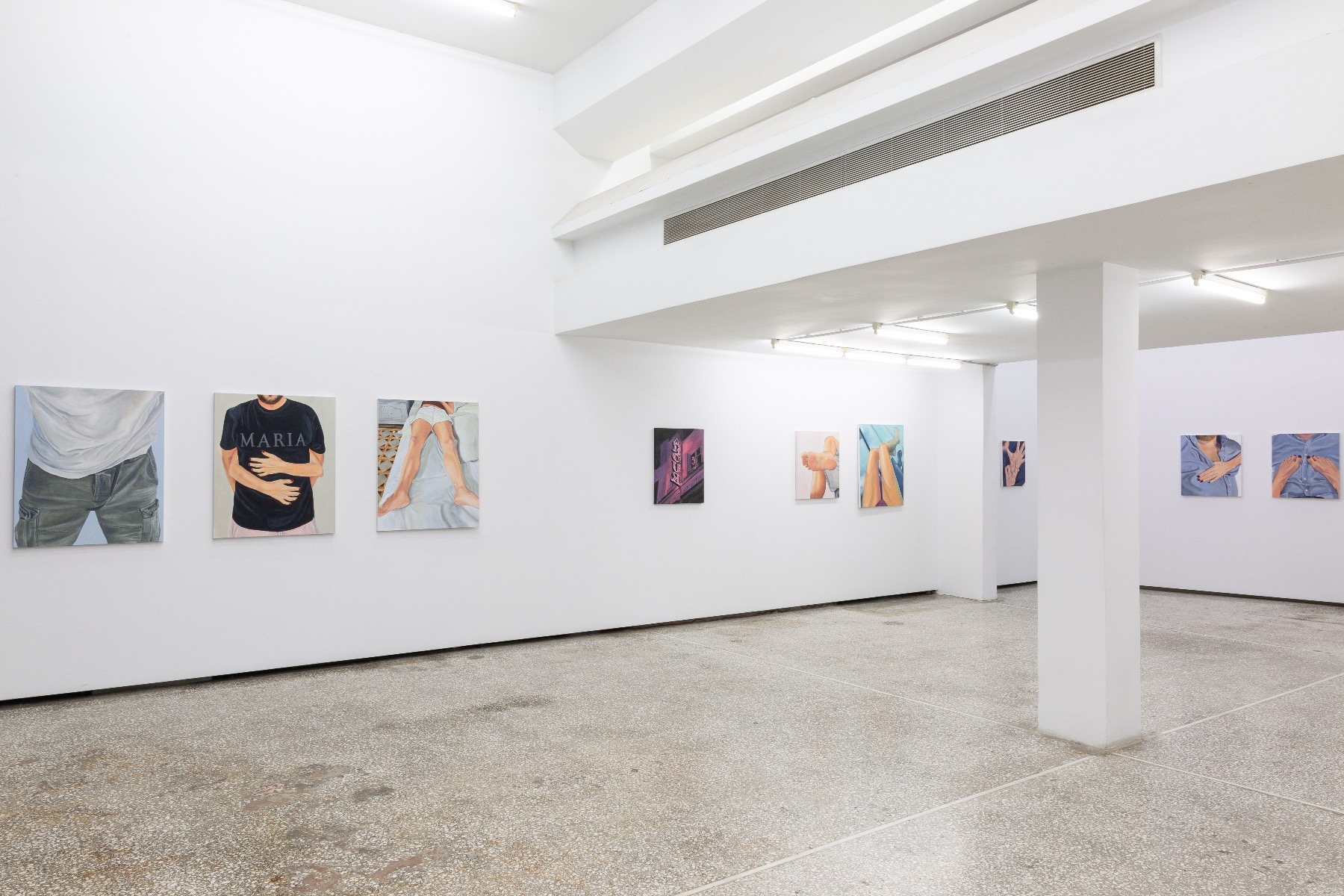
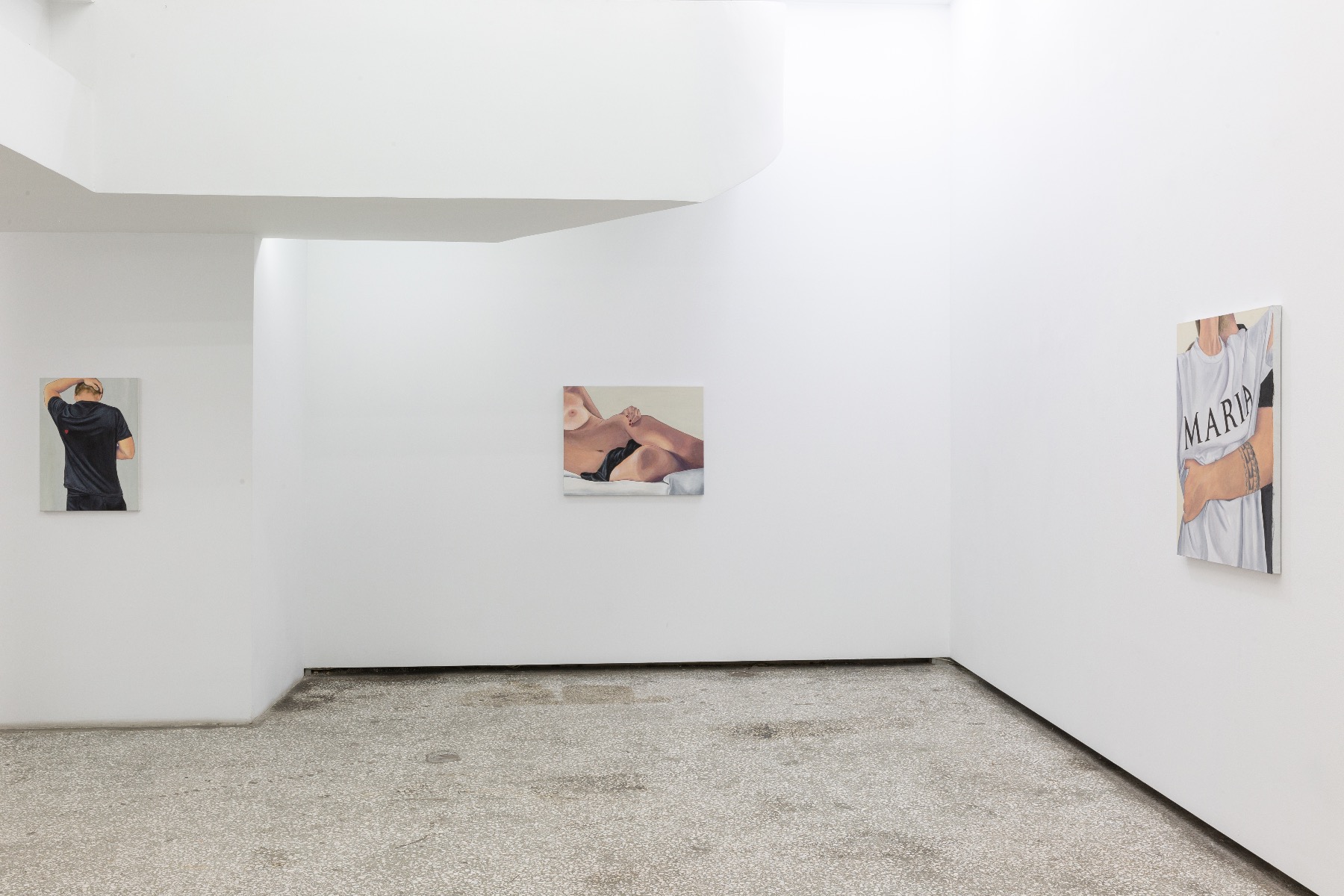
The paintings are relatively small, or more precisely, they are realistic in size, which makes one’s inner conversation even more intimate when looking at them. “I like to keep the paintings small because I want them to be about life-size, or close to it. I feel that since they're about the body, they should be life-size,” says Maria.
Maria Joannou's images do not have faces; she has deliberately avoided them as if to remind us that we are more alike than different. "I always cut off a head because I don't want it to be a portrait of anybody. I want somebody to see it and to just think whatever comes into their mind."
With the exception of three works inspired by Instagram, the rest are everyday snapshots that Maria took with her iPhone, then cropped, cleared away the background, and finally, turned into paintings. She is in some of them herself, as are her friends, although the models don't really matter this time. The situations depicted in Maria's work are a kind of hidden “here and now” – so familiar and yet so unappreciated because when they happen, we usually don't notice because in our heads, we are somewhere else.
Maria Joannou. Portrait of a couple, 2024. Oil on linen.
90 x 70 cm., 35.433 x 27.559 in.
© the artist. Courtesy The Breeder. Photographer: Athanasios Gatos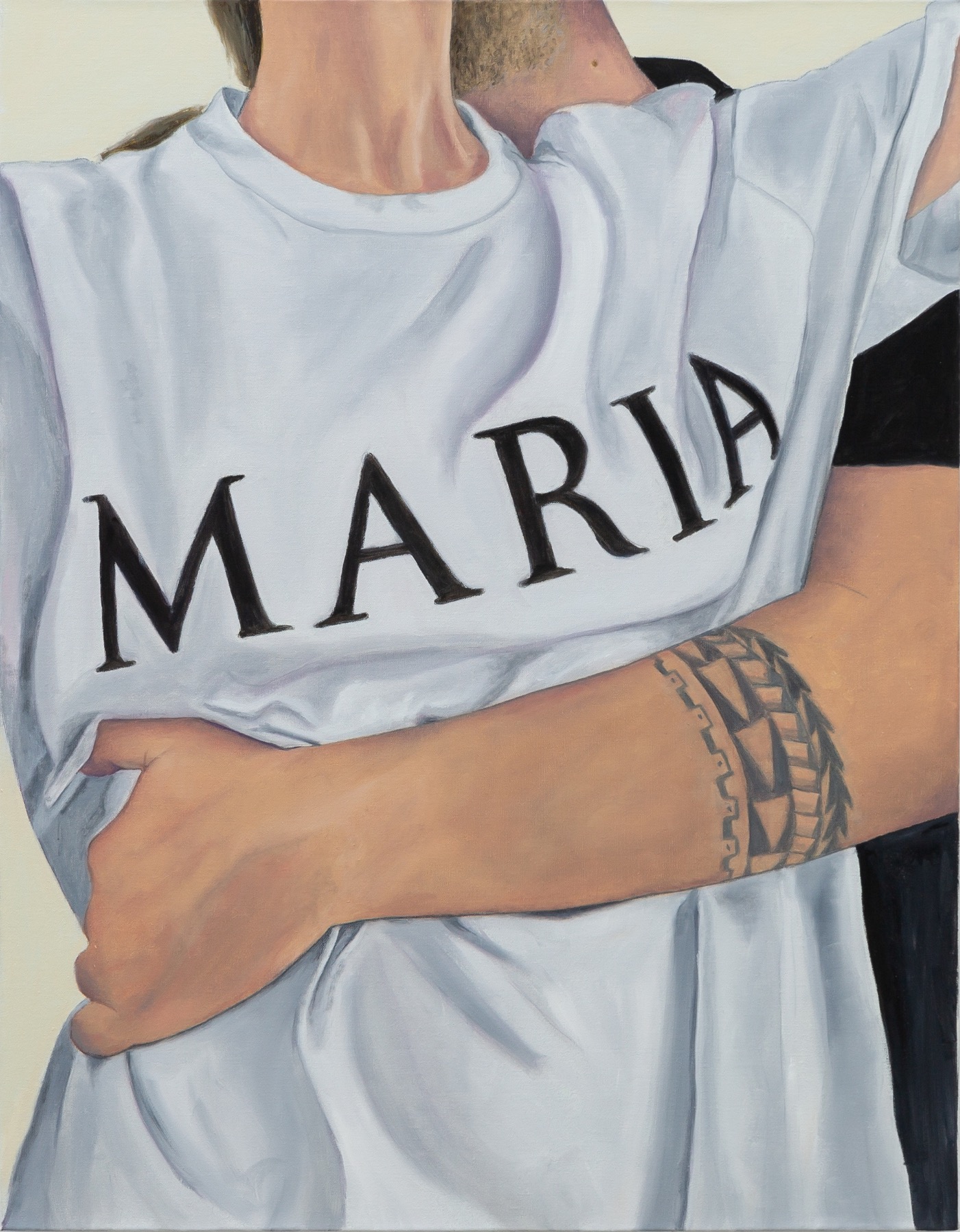
Maria Joannou. Some things last, 2023. Oil on linen.
70 x 60 cm., 27.559 x 23.622 in.
© the artist. Courtesy The Breeder. Photographer: Athanasios Gatos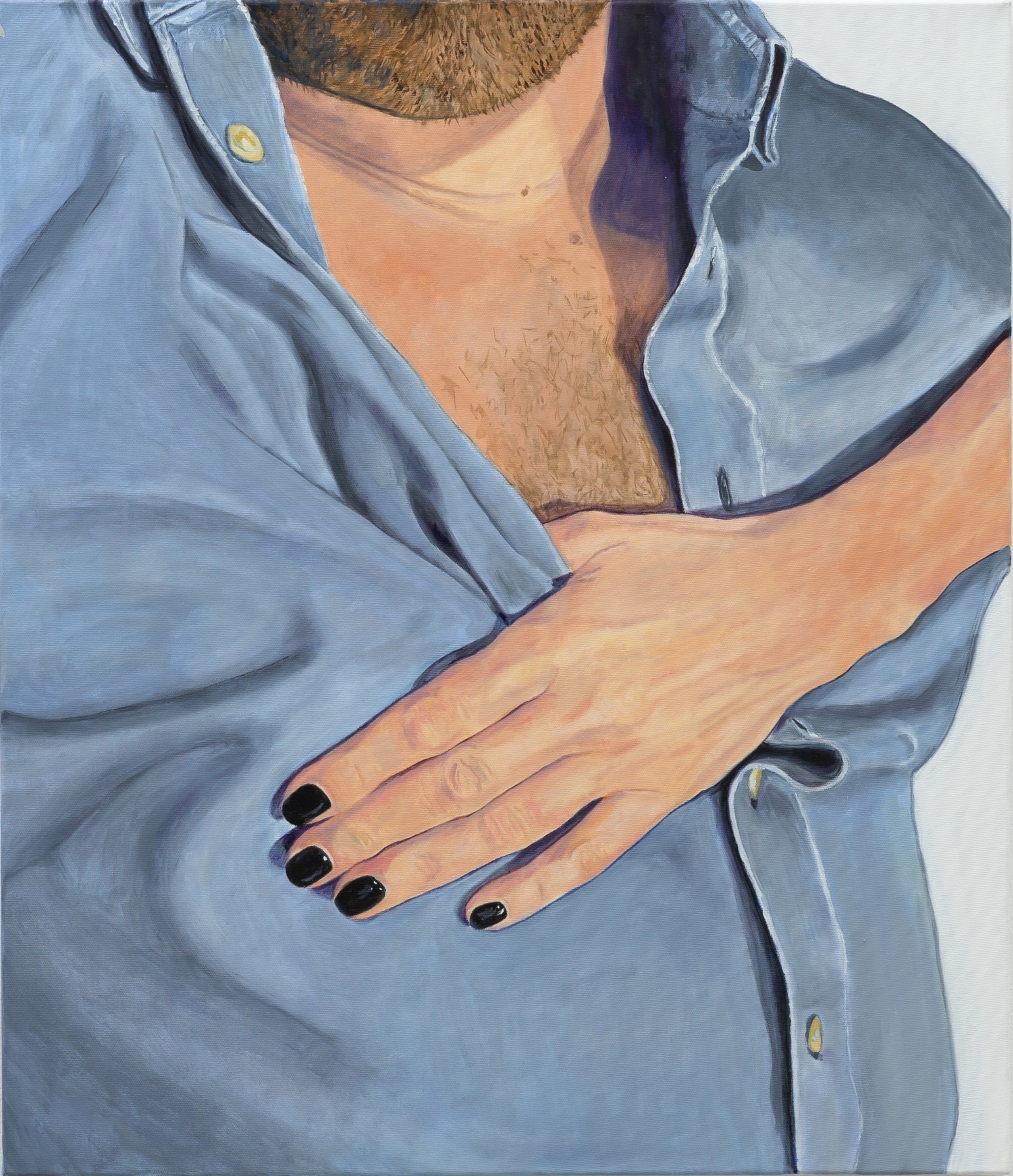
“I think the uniqueness lies in the way they're cropped. That's what makes them different. It's very important how you cut the image and the feeling that part gives to me and, hopefully, to someone who sees it. I think the closeness of everything matters, too. It's like a casual iPhone picture, but it takes me time to find the right size and crop. This process is important to me.
“For example, there's a girl with a lot of moles on her body. Someone asked me why I didn't remove them. I said it makes it feel real. The girls are all beautiful, but those small details, like a little paunch on the stomach, add a sense of reality. It's something human.”
“And with skin, I love creating layers. Like adding veins. I'll paint blue first, then layer the skin color on top. It's a process. It's not child's skin anymore – it's not perfect. But I like all these things. These details,” says Maria.
Maria Joannou. Pretty pink flowers, 2024. Oil on linen. 90 x 70 cm., 35.433 x 27.559 in.
© the artist. Courtesy The Breeder. Photographer: Athanasios Gatos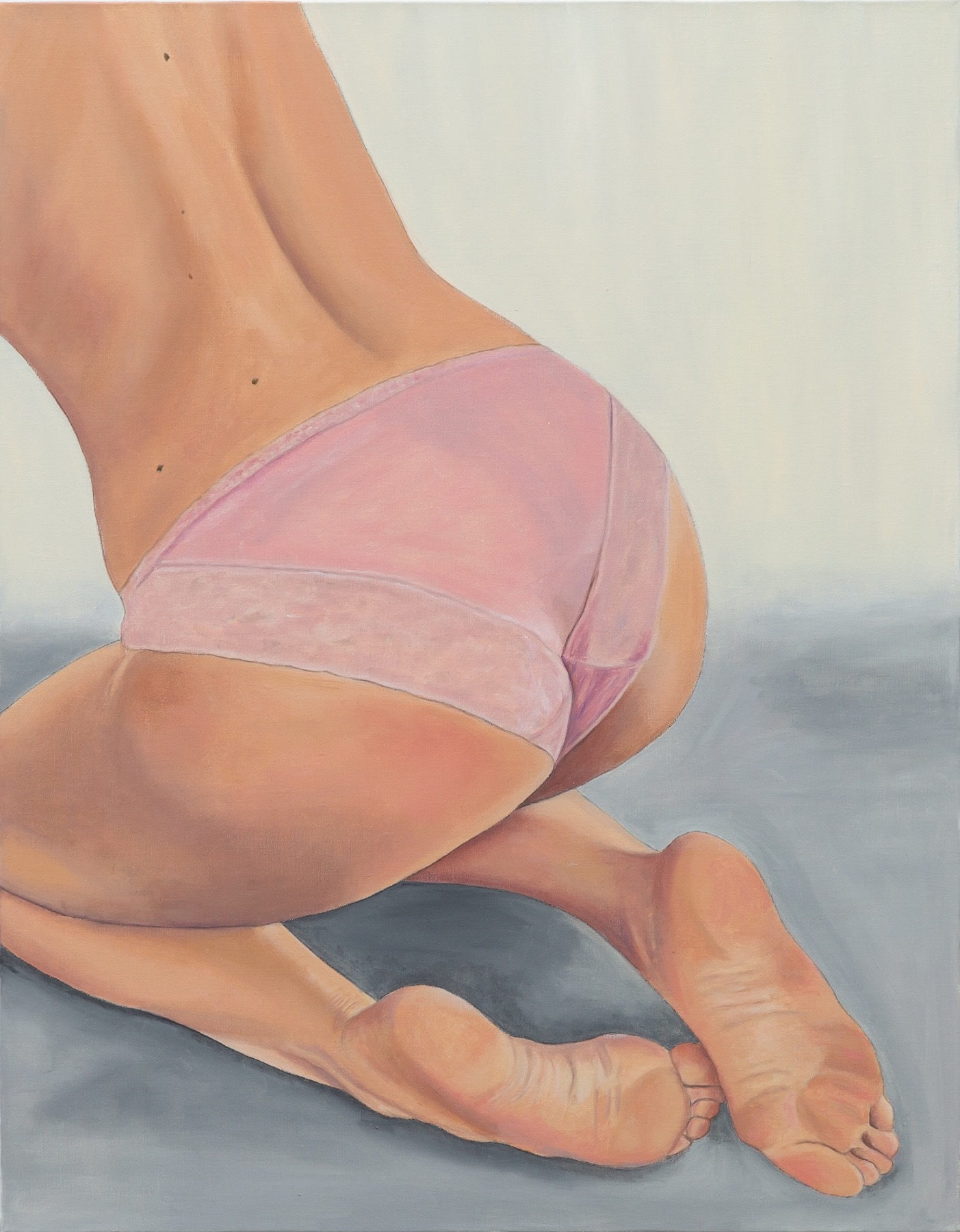
Maria Joannou. Nostalgia for something, 2023. Oil on linen.
90 x 70 cm., 35.433 x 27.559 in.
© the artist. Courtesy The Breeder. Photographer: Athanasios Gatos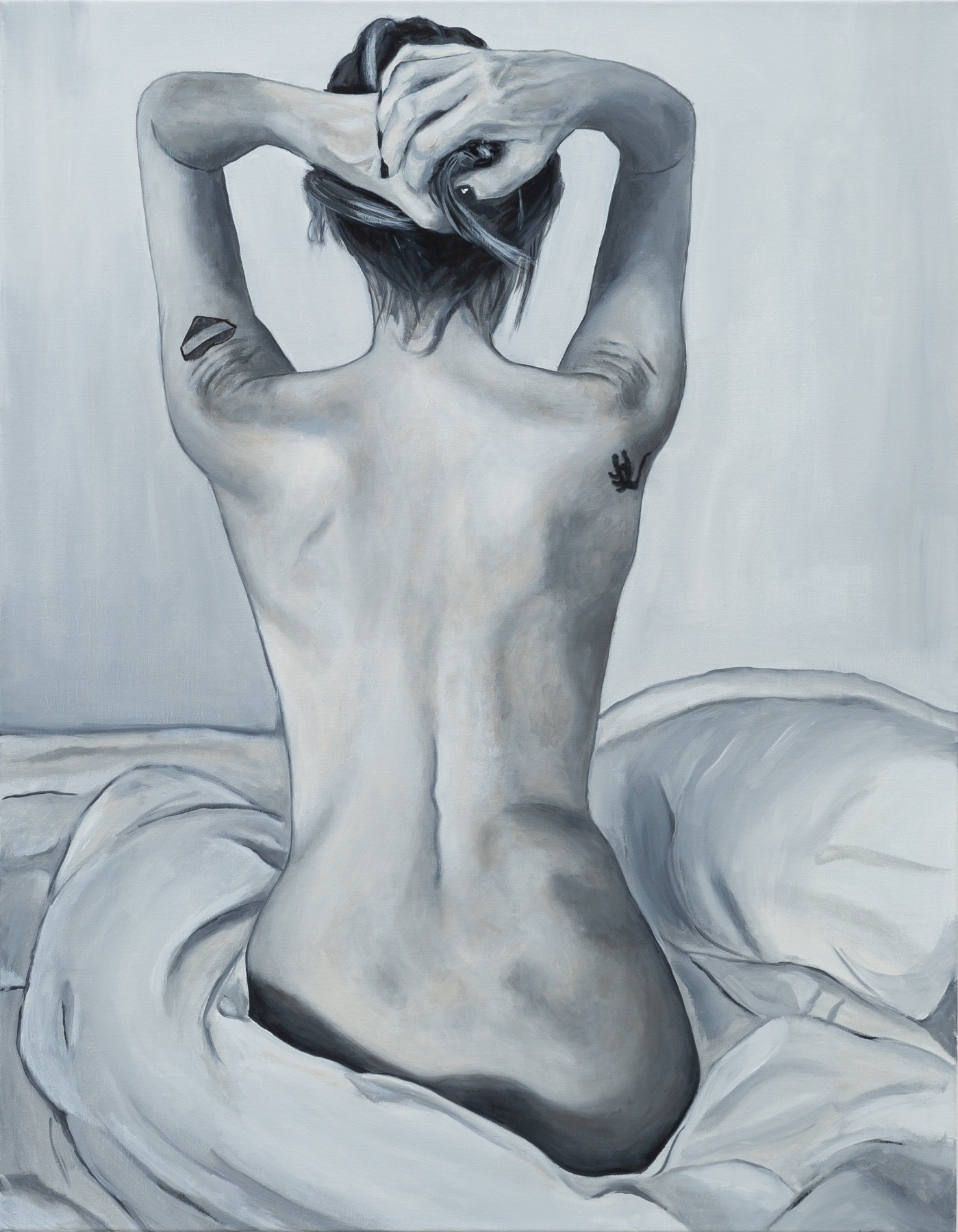
Freud once hypothesised that the ego is a psychic projection of the surface of the body, that is, it is formed from the psychological experience of the surface of the body – the skin. The skin is also our psychological experience of boundaries. As the body's largest organ, it is actually very functional and acts as a kind of protective layer: it’s waterproof, flexible, breathable, and responds positively to care and washing. It holds us together and, at the same time, it is a canvas through which we can express so much – our identity, social status, ethnicity, hobbies and interests. The surface of the skin, though seemingly limited, is in fact almost infinite, especially in its complexity and the way it interacts with our mind, environment and body as a whole. Our skin is in a constant state of flux, shedding the layers it no longer needs; it is self-cleaning and self-healing. As it ages, the skin on various parts of the body changes texture in different ways. It responds to the elements and the environment in a very nuanced way – feelings of metaphorical “pins and needles” or of the hairs on your arm “standing on end” are very direct reminders of this. Every square centimetre of your skin is essentially unique.
The skin is also very closely linked to touch, one of the first senses we develop at birth and one of the last to leave us when we pass away. It allows us to experience moments of pleasure as well as pain. It has its own intelligence in the way it reacts to different external stimuli: temperature, texture, vibration, touch.
In his essay The Wisdom of Life, philosopher Arthur Schopenhauer pointed out that “the simple truth [is] that every man's chief and real existence is in his own skin, and not in other people's opinions.” At the same time, there is a question that has, for centuries, preoccupied us all our lives – whether we are comfortable in our own skin. “How can man know himself? He is a dark and veiled thing; and whereas the hare has seven skins, the human being can shed seven times 70 skins and still not be able to say: ‘This is really you, this is no longer an outer shell’,” writes Nietzsche in Untimely Meditations, his four-part collection of essays.
For Maria Joannou, too, these works are, in a sense, a very direct and frank encounter with the self. Her parents are Dakis and Lietta Joannou, the renowned Greek art collectors, founders of DESTE Foundation for Contemporary Art. It is only natural that family friends such as Jeff Koons, Maurizio Cattelan, George Condo and others are present at the opening of her exhibition. “My dad's house was, you know, filled with art. So, it was both good and bad for me. When I was younger, I used to think that if I had a different family, I would have started much younger because I wouldn't have been so scared to move forward. But on the other hand, it's an amazing background to have. You see so many things and have so many experiences around you that shape who you are.”
“And the art my dad liked wasn't basic; it was very complicated and always ahead of its time. This gave me the freedom to see things that others might not see so easily, which is amazing, of course. But it was also very intimidating when I wanted to become a painter.”
Thirsty: Installation view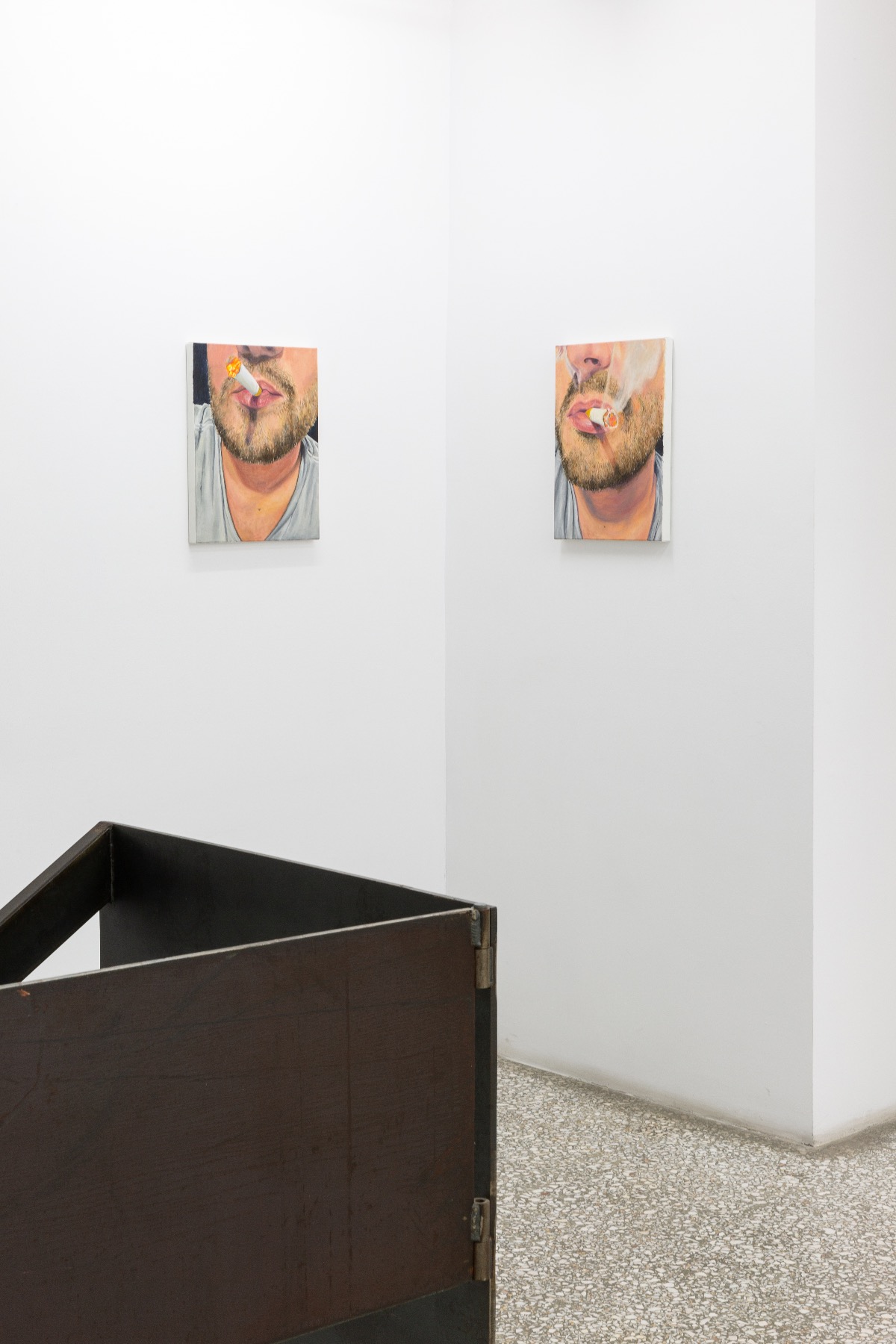
Maria Joannou. Think twice before you give a fuck 2, 2023. Oil on linen. 45 x 35 cm., 17.717 x 13.78 in.
© the artist. Courtesy The Breeder. Photographer: Athanasios Gatos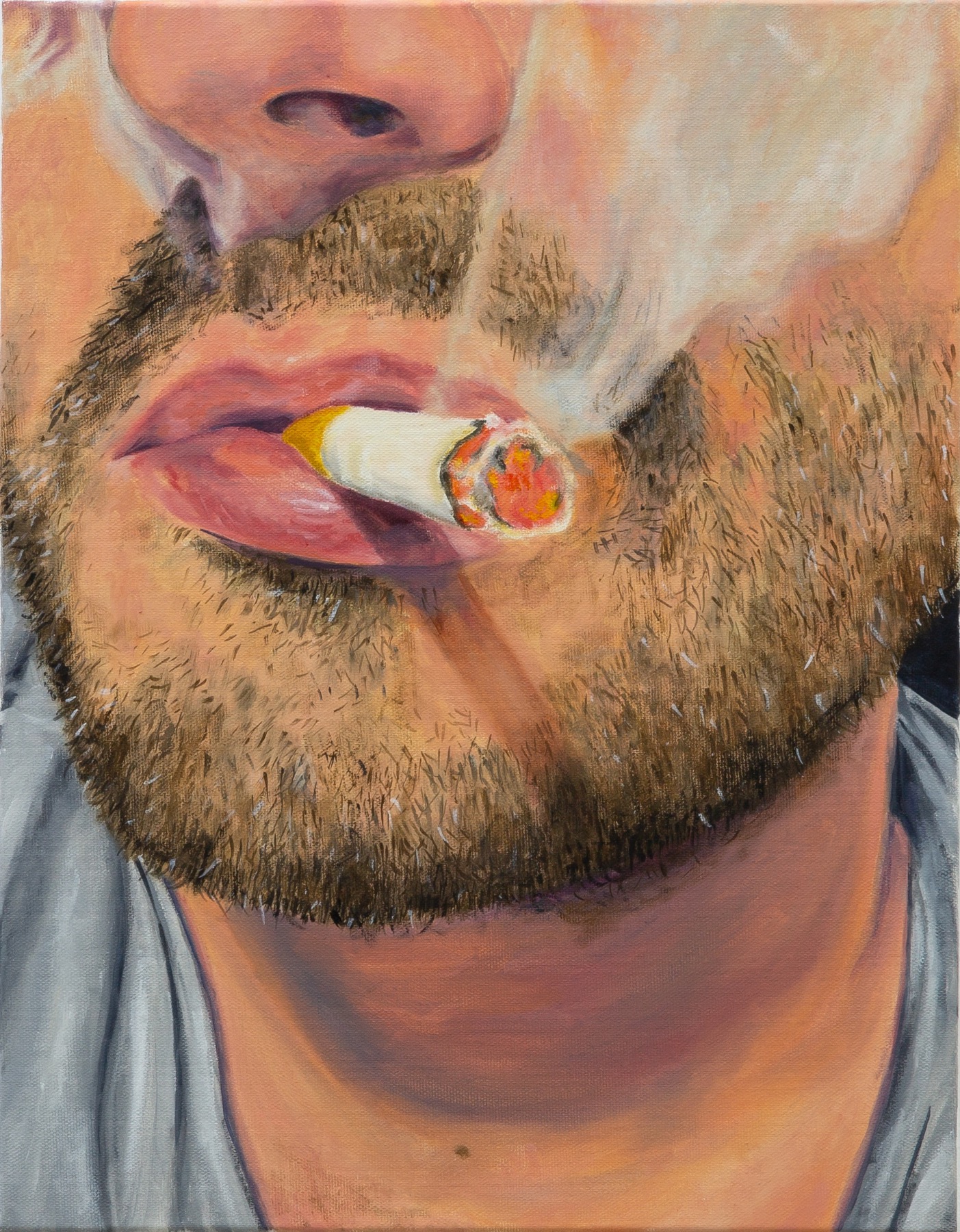
“I studied art when I was very young, in school. Then I got married, had kids, got divorced, and married again. So, I left painting, even though I really loved it. I turned to art history instead. When I was around 44 and got divorced again, I started painting again. I did a lot of psychotherapy, which helped me open up and feel very free with myself. After that, everything in my life felt easier and freer, and I became very comfortable with my body.”
“For me, this is very natural. Many people still find it difficult to feel comfortable in their bodies, but I don't see it that way. I just find it beautiful. I think it's beautiful, and it comes naturally to me. All my paintings are figurative; I like bodies, especially female bodies. There are always people who say it's sexual, that it's too much. I don't see it that way. I see it as soft, beautiful, and romantic,” Maria explains.
In one of Joannou’s paintings, her boyfriend’s foot is prominently featured. “Everybody thinks it's weird that I did my boyfriend's feet. I don't know, I just love the colors,” she adds. The foot is a symbol of one’s freedom of movement. Interestingly, in the human body, the foot is on the opposite end of the head, and perhaps that is why for us, the foot is also symbolic of humility. We take off our shoes in a temple or when entering someone's home. The foot is used to measure distance. It is very sensitive and registers the slightest change in the surface upon which it is moving and adapts accordingly. We remember the sensation of walking with bare feet – whether on marble or wooden floors, on sand, pavement or grass, and especially when we step on a pine cone. The foot is intuitive – it knows when to move and in which direction before your conscious mind has even fully worked it out. The foot connects us to the earth and to physical reality – constantly, and with every step. Our feet are made up of countless very flexible and strong bones that are in continual gear-like tooth-and-notch contact with muscles and nerves, thus supporting the body and balancing its weight. Leonardo da Vinci once called the foot “a masterpiece of engineering and a work of art.”
Thirsty: Installation view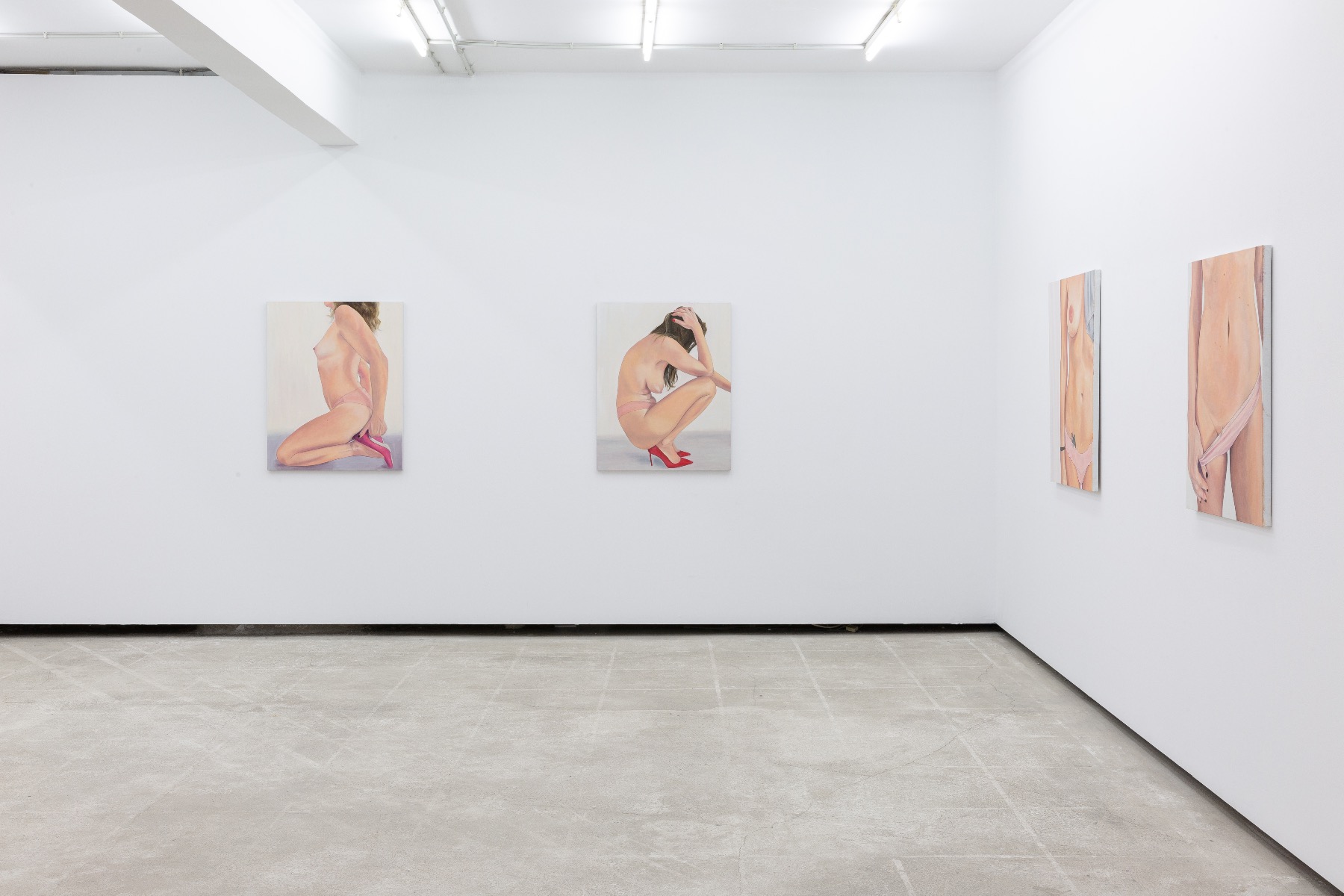
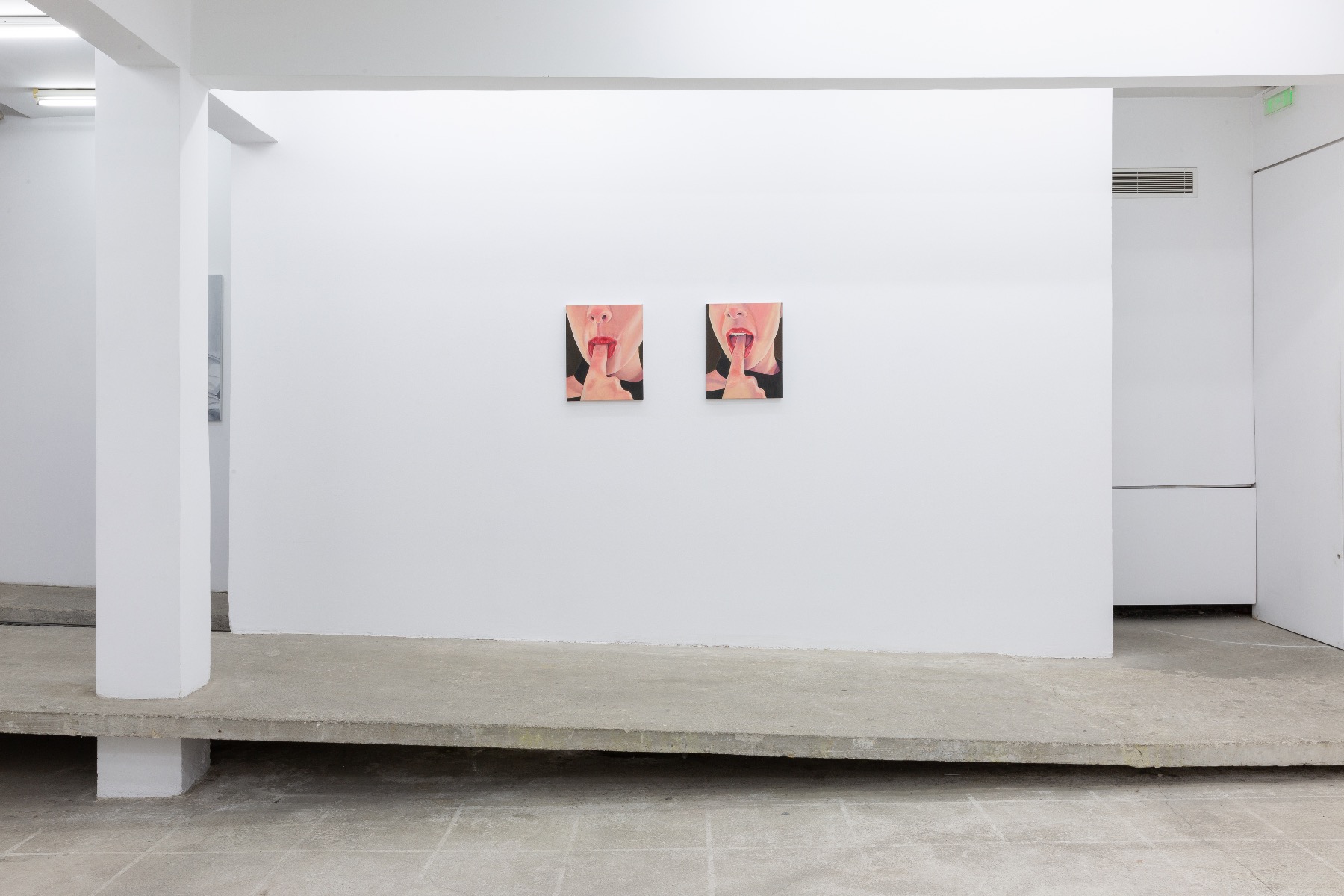
Interestingly, the original impetus for this exhibition was the book Carlo Mollino: Polaroids (2002), featuring the artwork of the eponymous Italian designer. Mollino was an extravagant figure; he was not only an architect, designer, photographer and copywriter, but also an adrenaline junkie – a race car driver and skier. His designs were largely influenced by the female body. In the 1960s, while living in Turin, he organized night photography shoots that mostly starred dancers. He used the extravagant interiors of his villa as the backdrop. He then printed these Polaroids and enhanced them with a very fine brush, bringing them closer to the ideal female form of his imagination. They embody the quintessence of obsession, an almost pathological attention to detail but also mystery. More than 1200 of these photographs were discovered after Mollino's death in 1973, and only a few were publicly exhibited until 2002, when they were published in the aforementioned book.
“I was obsessed with the Polaroids by Carlo Mollino. I have his book and I thought I would do the same with my friends. I was very attracted to looking at them. But when I did the first painting, I understood that I want to do it my way. I wanted it to be soft. I wanted to make it more romantic rather than sexy,” Maria says with a laugh.
Her work is neither obsessive nor voyeuristic – there is no sense of the body as an object, but rather as a fusion – intimate and silent. Maria admits that the process of making her pieces is more emotional than intellectual. “You know, I don't feel like I need to do this. It's like something is flowing through me...I can't even process it in my head. You know what I mean? It's a feeling that comes from an image I see, and I don't overthink it.”
“I love painting. I think it's the best. I like that when you see something, you immediately have a reaction to it. You don't have to know things or need an explanation. With painting, you get an immediate feeling, a reaction. You either like it or you don't, anything goes.”
Maria Joannou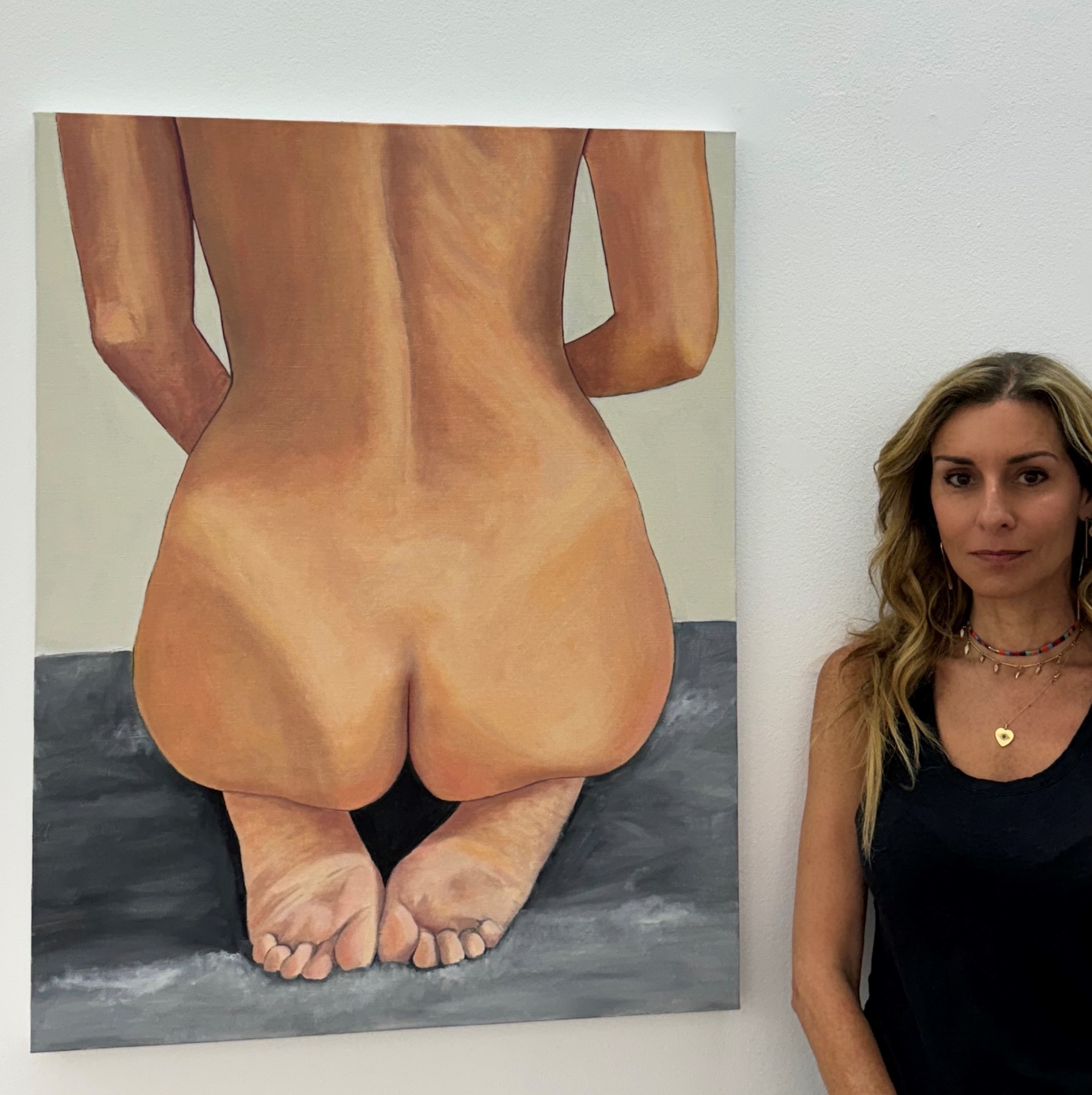
The greater part of The Breeder gallery's street-side facade is made up of monumental steel doors. Their texture is industrially robust but also a bit mysterious. Upon ringing the doorbell, the doors begin to move and slowly open – like skin that has just sensed the touch of another. I keep this feeling within me.